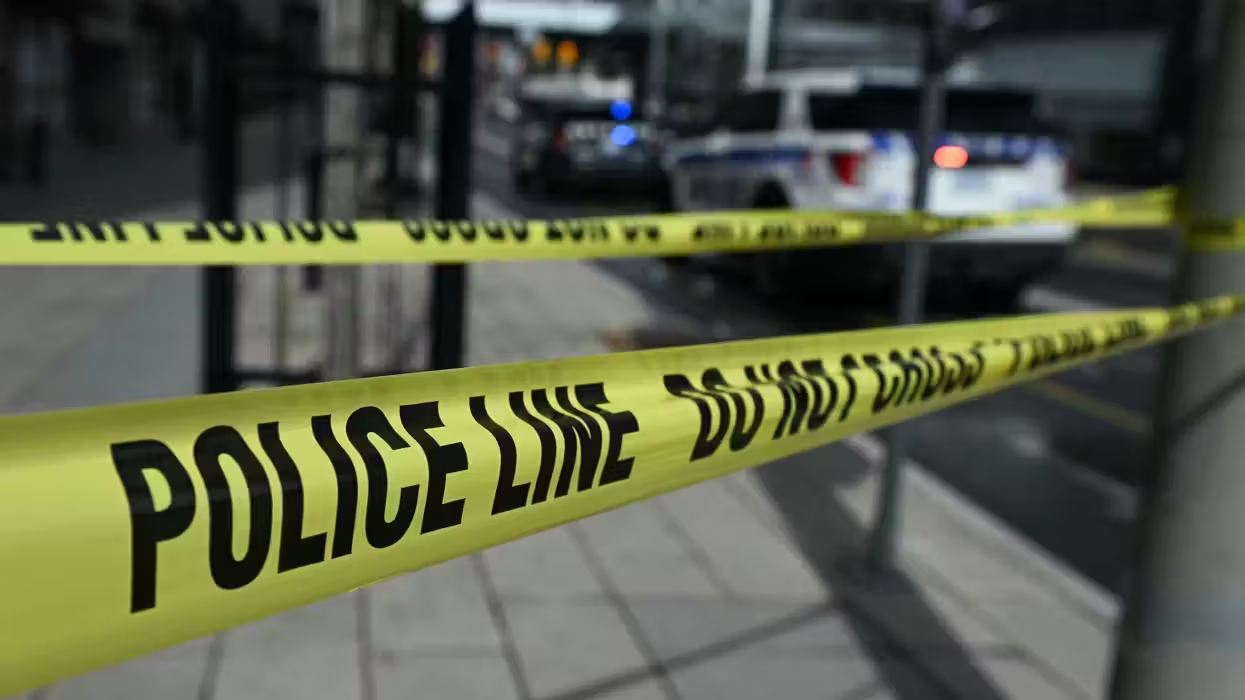
© 2025 Blaze Media LLC. All rights reserved.
Spooky: New Photos Peer Inside an Abandoned Island Leper Colony Near NYC
February 01, 2012
"Notorious and sometimes sinister reputation."
Debris, decay, and the unmerciful growth of nature define this abandoned island for banished people. North Brother Island was once the last refuge of society's castaways, and though it has been left to rot for 50 years, new photographs have breathed life into this eerie facility.
Photographer and historian Ian Ference received special access to the site, and his photos have appeared in The Daily Mail. What you will see below is a haunting photographic collage that reminds us all of a long-forgotten place.
A former quarantine zone, leper colony and centre for drug addicts, these spooky buildings were once home to hundreds of patients.
But the Daily Mail has highlighted its insidious reputation, stating that it was once "a place of indescribable misery, which one inmate compared to the notorious black hole of Calcutta."
While very few New Yorkers even know about this abandoned facility, it is only 350 yards from highly populated areas of the Bronx. North Brother Island was used as a quarantine centre for the first time back in 1885.
Soon after is opening, it was home to a few lepers, but its most infamous resident was an Irish immigrant who came to be known as 'Typhoid Mary."
After years moving from family to family as a cook, spreading the typhoid infection wherever she went despite showing no symptoms herself, police forcibly relocated Mary to North Brother Island.
She spent years confined to wandering her wooded prison island.
North Brother Island also had a front row-seat to the 1904 fire onboard the passenger ship, General Slocum. The steam ship, which was carrying a Lutheran Church outing on Manhattan's East River, caught fire. Of the 1342 people on board, 1,021 were killed in the disaster, and most of the dead were women and children.
Offiicially Closed in 1963, North Brother Island has become something of an urban legend to those who knows about it. Protected species of birds are its only year-round inhabitants and armed authorities patrol the waters to ensure the former quarantine zone is never violated.
Photographer Ian Ference told the Daily Mail: "This has got to be one of America's most important places to visit,' he said. 'Historically it has had a notorious and sometimes sinister reputation."
Ference added that 'It was established as a forced quarantine camp for people suffering from infectious and often fatal diseases such as typhoid, scarlet fever, yellow fever and typhus. There were six people suffering from leprosy confined here in wooden huts."
During this time in New York's history, there was widespread fear that unclean immigrants from European countries like Ireland and Italy were forced to live in crowded and unsanitary conditions that allowed dangerous disease to spread like wildfire.
'Health authorities had a mandate from the people to track down and detain those infected with certain diseases. Unless they happened to be wealthy enough to afford a private clinic, these poor souls would be sent to quarantine areas. And among the most notorious quarantines was North Broth Island.
Conditions on the island, even for the time, were considered deplorable. The mortality rate for patients there was high, and it appeared in many cases to be more of a place one was sent to rot and die than recover and re-enter society.
"Its first inhabitants were those unfortunate patients with communicable diseases such as smallpox, tuberculosis, scarlet fever and diphtheria, who were forcibly removed from the city’s teeming streets. Living conditions were primitive, a hotch-potch of pavilions, tents and cottages flung up around the central Riverside Hospital."
Ference also described harsh living conditions on the island:
"When bad weather stopped ferries from running there were food shortages and in winter, frequently little heat. Incarceration on North Brother was often a death sentence. Those who did return from its shores spoke of a hellish environment like ‘the black hole of Calcutta."
Unlike modern New York, with ubiquitous cellular phones, internet, and even live video chat, back in the heyday of North Brother, those sent to the island were completely cut off from the rest of the world. Many patients were never seen or heard from by their families ever again.
Today, only a handful of ornithologists are allowed to visit the island to document its colony of black-crowned night herons. City patrol officers keep watch on the island, though some intrepid bloggers have described their illegal trips to this abandoned place for those society had forgotten.
There are even more of these stunning, yet haunting, Ian Ference photos here, and additional historical descriptions of the island, courtesy of The Daily Mail.
Want to leave a tip?
We answer to you. Help keep our content free of advertisers and big tech censorship by leaving a tip today.
Want to join the conversation?
Already a subscriber?
more stories
Sign up for the Blaze newsletter
By signing up, you agree to our Privacy Policy and Terms of Use, and agree to receive content that may sometimes include advertisements. You may opt out at any time.
Related Content
© 2025 Blaze Media LLC. All rights reserved.
Get the stories that matter most delivered directly to your inbox.
By signing up, you agree to our Privacy Policy and Terms of Use, and agree to receive content that may sometimes include advertisements. You may opt out at any time.







